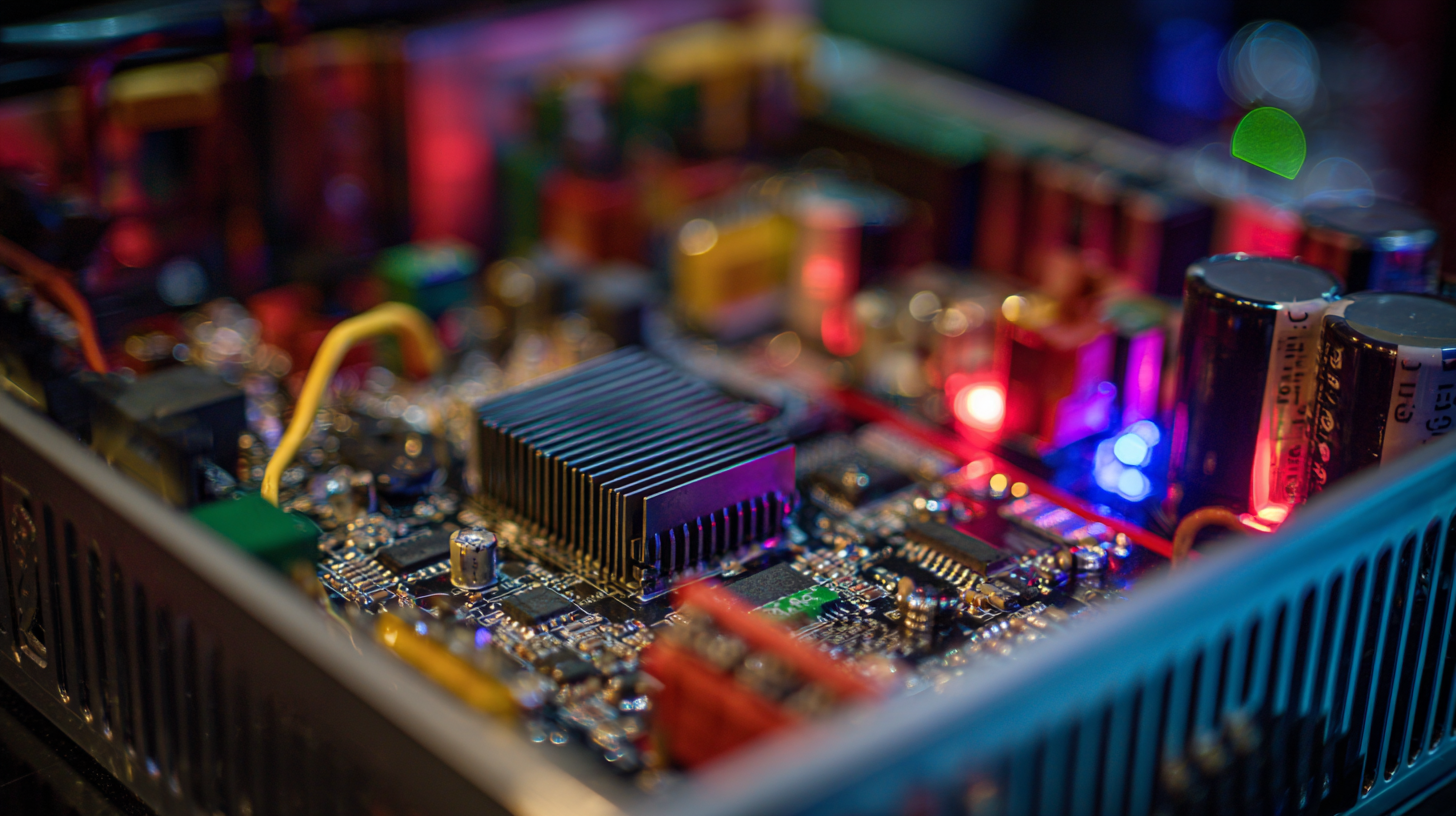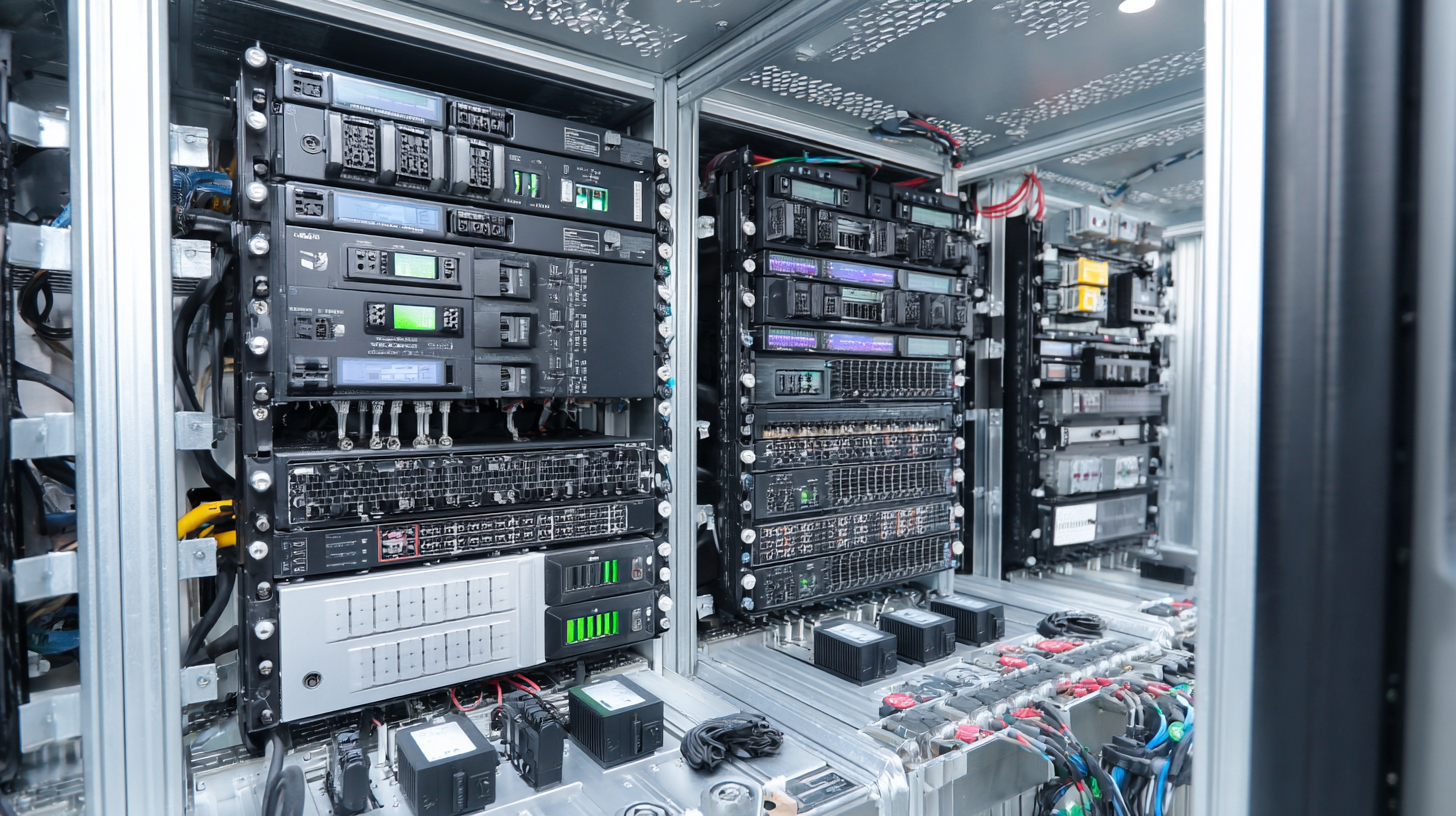Leave Your Message
- Phone
- E-mail
- Whatsapp


In an era where technology drives every aspect of our lives, the importance of reliable and efficient power supplies cannot be overstated. As one of the leading players in the global market, China has emerged as a dominant force in manufacturing power supplies that not only meet but often exceed stringent quality and performance standards. This blog provides a comprehensive checklist to guide businesses and consumers alike in discerning the essential features and benefits of these power supplies. From ensuring compliance with international safety regulations to evaluating energy efficiency and long-term reliability, this checklist will empower you to make informed decisions in selecting the best power solutions for your needs. Join us as we delve into the critical elements that define unmatched quality and performance in power supplies sourced from China.

As we approach 2025, the landscape of power supply technologies is rapidly evolving, driven by innovations that prioritize efficiency, sustainability, and connectivity. Emerging technologies such as wide bandgap semiconductors, advanced energy storage solutions, and smart grid integration are set to redefine how power supplies operate. These advancements not only enhance performance but also reduce environmental impact, making them crucial for industries aiming for greener practices.
Tip: When selecting a power supply, consider products that incorporate the latest technologies. Look for those using wide bandgap materials like SiC or GaN, which offer higher efficiency and thermal performance. Additionally, ensure the power supply is compatible with smart grid applications to future-proof your operations as energy management systems become more prevalent.
The integration of Artificial Intelligence (AI) and machine learning in power supply design is another significant trend. These technologies enable real-time monitoring and predictive maintenance, minimizing downtime and optimizing performance. As manufacturers adopt AI-driven solutions, customers can expect to see smarter, more responsive power supplies that adapt to changing demands.
Tip: Stay informed about AI advancements in the power supply market. Opt for solutions that offer self-diagnostics and adaptive capabilities, which can significantly enhance operational reliability and lower overall costs.
In the realm of global manufacturing, Chinese power supply products have carved out a significant niche, ensuring that quality standards are not just met but frequently exceeded. The emphasis on rigorous quality control and adherence to internationally recognized standards has positioned Chinese manufacturers as leaders in delivering reliable and efficient power solutions. Companies are actively implementing comprehensive quality assurance protocols, from raw material selection to final product testing, ensuring that every component meets stringent specifications.
Navigating these quality standards requires a deep understanding of both local and international regulations. Chinese manufacturers are investing heavily in training and certification programs for their teams, fostering a culture of excellence and innovation. By employing advanced technologies and processes such as automation and lean manufacturing, they are not only enhancing their quality outputs but also driving down costs, making high-quality power supplies more accessible globally. As the demand for energy-efficient and durable solutions continues to rise, the commitment to quality in Chinese manufacturing stands as a testament to their capacity for excellence on a global scale.
The global power supply market is experiencing a notable surge, with projections indicating a growth from $1.99 billion in 2025 to a staggering $3.69 billion by 2032. This expansion is largely driven by advancements in technology, particularly the increasing demand for high-efficiency power solutions to support the burgeoning AI and renewable energy sectors. Companies are recognizing the importance of enhancing power conversion efficiency and reliability, which are critical for maintaining performance across various applications.

Key factors contributing to this performance include the integration of smart grid technologies and energy storage systems, which facilitate seamless management of renewable energy sources. The promotion of critical minerals essential to the energy transition, alongside innovations in precision power solutions, ensures that the supply chains remain robust to meet growing demands. As companies like Advanced Energy introduce award-winning solutions at major summits, the landscape for global power supplies is set to become more competitive, underlining the commitment to unmatched quality and performance that defines today's energy market.
When selecting the right power supply, it’s critical to consider a variety of factors that can significantly impact performance and reliability. Start by assessing the application requirements; for instance, in medical devices, compliance with stringent regulatory standards is essential to ensure safety and efficacy. According to industry analysis, power supply reliability can account for up to 30% of overall system failure rates, making quality assurance non-negotiable. Therefore, validating designs through robust testing and certifications is key.
Furthermore, compatibility with existing systems cannot be overlooked. A power supply must seamlessly integrate with peripheral devices and comply with electrical standards, ensuring optimal performance. For example, in the context of remote-patient monitoring systems, where power supply subsystems support critical biosensor functionality, it is vital to ensure that the configuration meets the specific voltage and current requirements outlined in recent validated designs. Additionally, potential suppliers should be scrutinized for manufacturing capabilities and past performance data, which act as reliable indicators of future reliability.
Lastly, consider the sustainability of the power supply design. With increasing attention on energy efficiency, selecting power supplies that minimize environmental impact while maximizing operational efficiency is becoming increasingly vital. Data indicates that energy-efficient designs can lead to cost savings of up to 20% over the product lifecycle. This comprehensive checklist will help you make informed decisions and secure unmatched quality in power supply solutions.

In the competitive landscape of the power supply industry, innovation plays a crucial role in maintaining a competitive edge. As the global renewable energy market is projected to reach a staggering $9.54 trillion by 2023, with estimates soaring to $15.74 trillion by 2032, companies are required to not only keep up with advancements but also lead the way in technological breakthroughs. This rapid growth presents a unique opportunity for power supply manufacturers to enhance performance and quality through state-of-the-art solutions.
For instance, recent implementations like the integration of photovoltaic fencing with DC bus control systems in oil extraction exemplify how innovation can optimize energy use. By effectively managing peak electricity loads and efficiently utilizing excess energy, such technologies facilitate a more sustainable and economically feasible use of resources. Furthermore, as industries such as automotive are embracing sustainable development, the need for reliable and advanced power supply systems becomes increasingly paramount. Companies that prioritize innovation and quality will be best positioned to thrive in this evolving market landscape.
| Dimension | Performance Indicator | Current Value | Commentary |
|---|---|---|---|
| Efficiency Rate | Energy Conversion Efficiency | 94% | High efficiency aids in reducing energy costs and environmental impact. |
| Reliability | Mean Time Between Failures (MTBF) | 200,000 hours | High MTBF indicates durability and low maintenance needs. |
| Innovation | Research and Development Investment | 15% of Revenue | Investment in R&D drives innovation and product differentiation. |
| Market Share | Percentage of Global Market | 30% | Leading position highlighting competitive strength in the industry. |
| Customer Satisfaction | Net Promoter Score (NPS) | 75 | High customer satisfaction reflects brand loyalty and reputation. |
